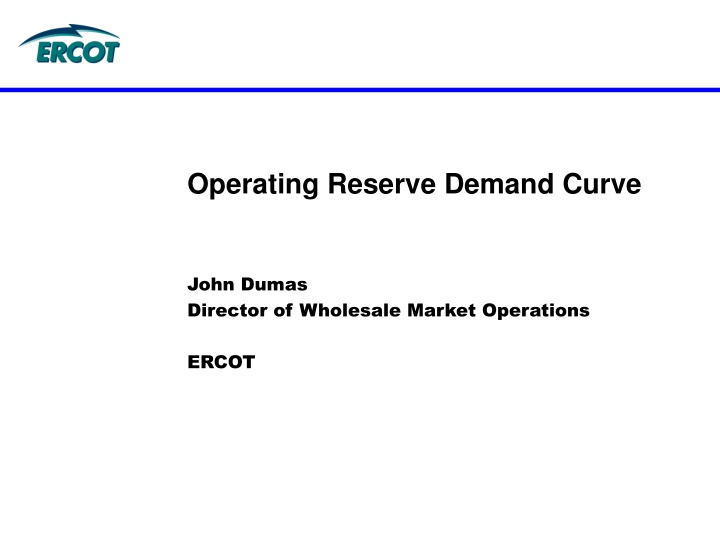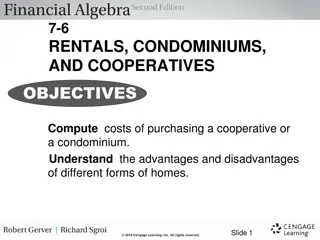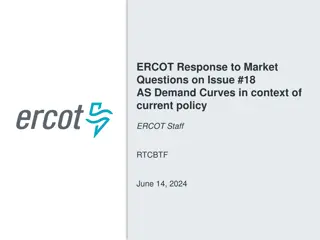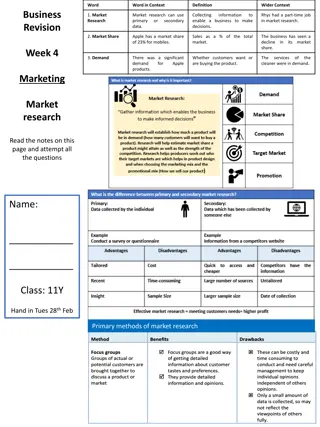
ERCOT's Operating Reserve Demand Curve and Resource Adequacy
Learn about ERCOT's Operating Reserve Demand Curve (ORDC), its impact on resource adequacy, scarcity pricing mechanisms, and how it incentivizes generators to maintain grid reliability by appropriately pricing system conditions.
Download Presentation

Please find below an Image/Link to download the presentation.
The content on the website is provided AS IS for your information and personal use only. It may not be sold, licensed, or shared on other websites without obtaining consent from the author. If you encounter any issues during the download, it is possible that the publisher has removed the file from their server.
You are allowed to download the files provided on this website for personal or commercial use, subject to the condition that they are used lawfully. All files are the property of their respective owners.
The content on the website is provided AS IS for your information and personal use only. It may not be sold, licensed, or shared on other websites without obtaining consent from the author.
E N D
Presentation Transcript
Operating Reserve Demand Curve John Dumas Director of Wholesale Market Operations ERCOT
Objectives Identify the System Wide Offer Cap price that became effective on June 1, 2014. Identify the NPRR that implemented the Operating Reserve Demand Curve (ORDC) Identify what the Value of Lost Load is in ERCOT. Identify the On-Line Adder for On-Peak of August 2014 2
ERCOT Market High Level Market Design Energy Only Voluntary Day-Ahead Market Co-optimizes energy and reserves hourly for next day Real-Time Market 5-minute nodal pricing 15-minute settlement Semiannual and Monthly Congestion Revenue Rights (CRR) Auctions 3
Summary of Nodal Policy Changes Established Offer Floors for Non-Spinning Reserve, Responsive Reserve & Regulation Up Reserve NPRR 426, 427, & 428 (effective January 2012) System Wide Offer Cap raised to $4,500/MWh effective Aug 1, 2012 $5,000/MWh effective June 1, 2013 $7,000/MWh effective June 1, 2014 $9,000/MWh effective June 1, 2015 NPRR 568 & 598 Implemented an Operating Reserve Demand Curve (ORDC) with the Value of Lost Load equal to $9,000/MWh effective June 1, 2014 Removed Offer Floors for Responsive Reserve & Regulation Up Reserve and updated the one for Non-Spinning Reserve to $75/MWh 4
Exercise The marginal cost of energy in ERCOT is currently $0.05/kwh ERCOT will run out of reserves in 30 minutes due to expected demand increase We need to curtail 75% of the homes in order to cover peak What are you willing to pay in order to not be interrupted? Current ERCOT Generation 100% 90% 80% 70% 60% Spinning Reserves Generation Output 50% 40% 30% 20% 10% 0% T=0 T=15 T=30 5
The Operating Reserve Demand Curve (ORDC) Price of Reserves ($/MWh) VOLL 0 2000 4000 6000 8000 Available Reserves (MWs) VOLL = Value of Lost Load 6
ORDC and Resource Adequacy Can a generator make money selling energy at cost without appropriate scarcity pricing mechanism? ORDC provides revenue to generators above their fuel costs ORDC appropriately prices system conditions Provides incentive to generate during scarcity Provides incentive to reduce consumption during scarcity Expected Reserve margins per the Brattle study 10.2% economic optimum 11.5% in equilibrium of current energy market design (minimizes customer cost) 14.1% required to meet 1-in-10 reliability standard 7
Fleet Flexibility in ERCOT (2014) Plenty of Wind, but also 44,800 MW of Natural Gas Generation 8
Weather 9 9
Operating Reserve Demand Curve (ORDC) How did it perform this summer? Average Monthly On-Peak Prices June-2014 System Lambda ($/MWh) On-Line Reserve Price Adder ($/MWh) 0.043 Off-Line Reserve Price Adder ($/MWh) 0.010 40.54 July-2014 38.45 0.157 0.038 August-2014 41.37 0.586 1.093 Average Monthly Off-Peak Prices System Lambda ($/MWh) On-Line Reserve Price Adder ($/MWh) 0.003 Off-Line Reserve Price Adder ($/MWh) 0.000 June-2014 31.93 July-2014 29.55 0.038 0.008 August-2014 30.73 0.265 0.105 10 10
Average Hourly Reserves 11 11
Summary System Wide Offer Cap price is changing from $7,000/MWh to $9,000/MWh on June 1, 2015. A new scarcity pricing mechanism using Operating Reserve Demand Curve (ORDC) based on Value of Lost Load of $9,000/MWh was implemented this summer which created pricing consistent with the system conditions this summer and fall. 14
Questions 1. Which of the following is the System Wide Offer Cap price that became effective on June 1, 2014? a. $4,500 b. $5,000 c. $7,000 d. $9,000 15
Questions 2. Which NPRR implemented the Operating Reserve Demand Curve (ORDC)? a. NPRR 428 b. NPRR 568 c. NPRR 598 d. Both b & c 16
Questions 3. A generator can make money while selling energy at cost without appropriate scarcity pricing mechanism. a. True b. False 17
Questions 4. The average On-Line Adder ($/MWh) for On- Peak of August 2014 was roughly? a. 0 b. 1 c. 10 d. 100 18






















